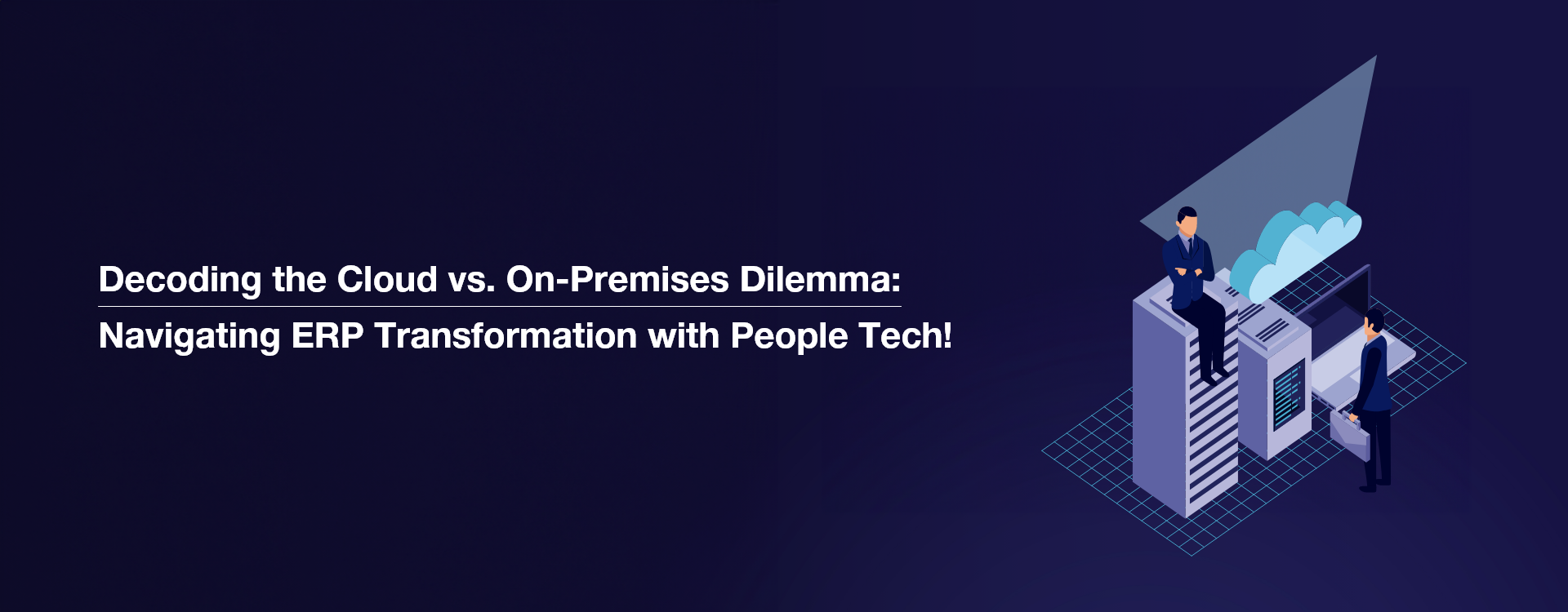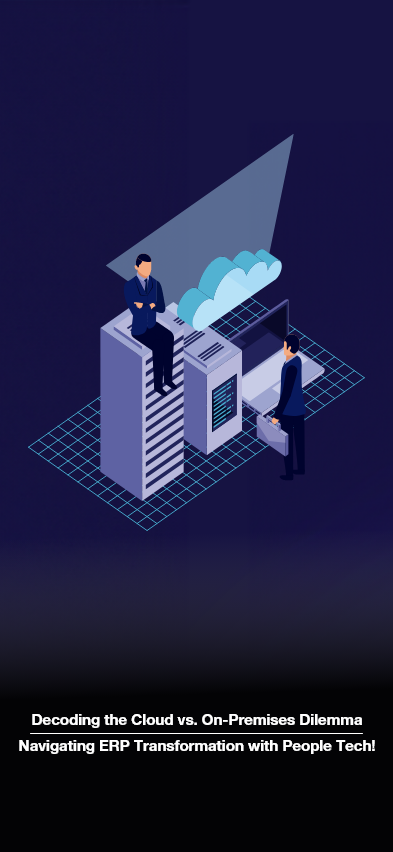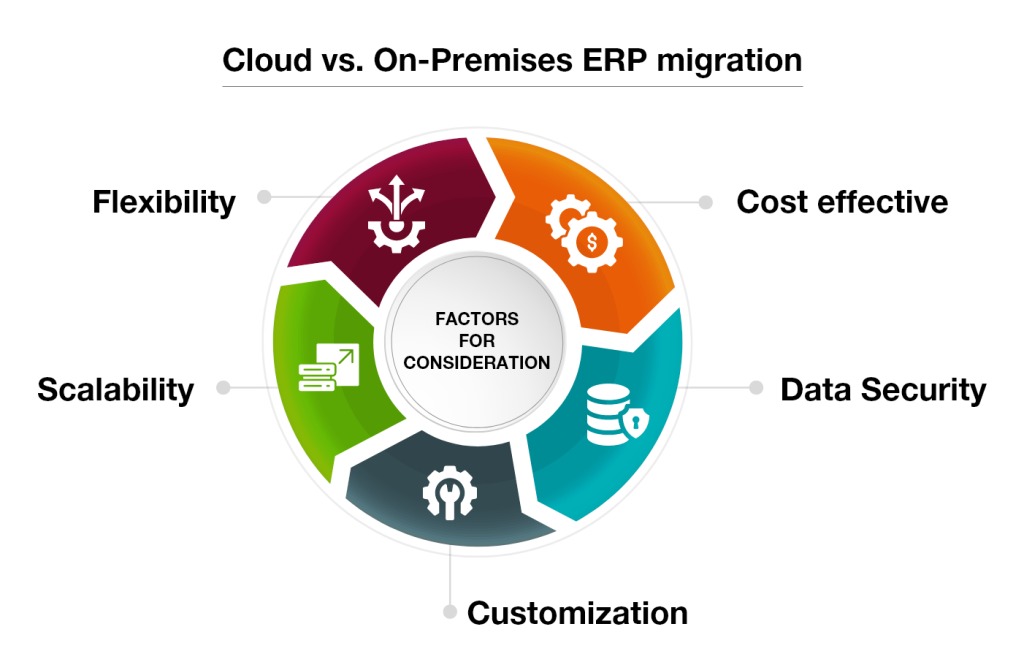

Are you planning to begin the journey of optimizing your business operations through the lens of Cloud ERP solutions versus traditional On-Premises systems? Know that it is no small feat.
Your organization’s trajectory might be greatly impacted by the decision you make between these two techniques in the fast-paced digital world where efficiency is crucial. Let’s examine the nuances of this migration conundrum and the specific benefits for well-known ERP suppliers like PeopleSoft, UKG, Workday, SAP, and Oracle.
Navigating the Cloud Advantage
A disruptive factor that is altering the norms for how businesses operate their ERP systems is cloud computing. The benefits are strong: since the software is safely hosted on the cloud provider’s domain, there is no longer a need for expensive hardware infrastructure. This reduces initial expenses and offers the ability to scale resources as needed. Imagine having unrestricted access to your ERP solution from anywhere in the world, promoting remote collaboration and advancing innovation. With automatic updates and feature improvements becoming standard, installing updates manually is no longer a burden and your system is constantly up to date.
Championing On-Premises Solutions
Although cloud computing gains most of the attention, On-premises solutions maintain their position and provide a distinct set of benefits. This is where control comes into play. Internally hosting the ERP system gives your company complete control over its data and guarantees adherence to security and industry norms. The key feature is customization, which enables companies to mold the program to fit their unique needs and workflows. This is especially helpful for organizations managing difficult workflows or operating in highly regulated sectors.
Weighing the Scales: Factors for Consideration

As the decision looms, evaluating budget constraints, customization needs, scalability, and security considerations becomes paramount. Cloud solutions, with their subscription-based model, often prove more cost-effective for organizations with limited capital, eliminating the need for hefty upfront investments. On-premises solutions, on the other hand, demand substantial initial financial commitments but may reveal long-term cost-effectiveness for those planning extended system use. The level of customization required, and the organization’s scalability needs to further shape the decision-making landscape.
Counting the Coins: Cloud vs. On-Premises Cost Comparison
In the financial arena, cost is a significant player. Cloud-based systems operate on a subscription model, freeing you from the burden of upfront hardware investments. On-premises solutions, though demanding initial capital, may emerge as the more cost-effective choice over an extended period. It is also an important factor to calculate the ongoing maintenance costs for On-premises solutions – server upkeep, software updates, and technical support – for a comprehensive cost analysis.
Safeguarding the Digital Realm: Security Considerations
Security remains a pivotal concern. Cloud solutions, while relinquishing some control, invest heavily in robust security measures such as data encryption, regular backups, and stringent access controls. On-premises solutions provide a different narrative, offering organizations the reins to implement tailored security measures aligned with their specific requirements. This proves invaluable for businesses handling sensitive customer information or operating in highly regulated industries.
Flexibility Unleashed: Scalability of Cloud vs. On-Premises
Flexibility and scalability distinguish the contenders. Cloud systems shine in scalability, effortlessly adjusting resources based on demand. This agility proves advantageous for organizations experiencing growth or fluctuating resource needs. On-premises solutions may necessitate hefty hardware investments for growth, potentially causing operational delays. Yet, they counterbalance this with unparalleled customization flexibility, enabling businesses to mold the software according to their unique processes and requirements.
Real-World Pioneers: Case Studies
We helped a giant tax and compliance management company migrate 17TB of data to the cloud with a successful compilation of 70+ components on RHEL 7.3 Linux. On one hand, this cloud migration has helped them achieve a 75% improvement in login, search, and PDF download. On the other hand, this has helped them reduce infrastructure and maintenance costs by $1.5 million per annum.
To know more about this
talk to our experts.
Mapping the Voyage: Steps to Migrate
For those contemplating a shift from on-premises to the cloud, a well-defined plan is imperative. Evaluate the current on-premises ERP system, pinpointing data and processes earmarked for migration. Thoroughly vet potential cloud ERP vendors, considering aspects like data security, scalability, and compatibility with existing systems. A robust data migration strategy, encompassing cleansing and validation, is the linchpin. Pilot testing and user training pave the way for a seamless transition, adopting a phased migration approach to minimize disruptions. Regular monitoring ensures optimal performance.
The Decisive Moment: Conclusion
The decision to migrate or stay on-premises is a nuanced one, demanding meticulous consideration of a myriad of factors. Cloud solutions promise cost savings, accessibility, and automatic updates. On-premises solutions counter with control, customization, and potentially lower long-term costs. Your organization’s unique requirements – budget, customization needs, scalability, and security – should steer the decision-making process. Real-world case studies illuminate the diverse paths others have taken, emphasizing the need for a bespoke approach. Whether cloud or on-premises, a well-orchestrated migration strategy is your key to thriving in the digital era.
And as you stand at this crossroads, contemplating the future of your ERP system, consider the expertise and guidance People Tech offers in seamless system integration. Engage with us, and let’s chart a course for your business that ensures not just a transition but a transformation. Let’s navigate this migration dilemma together, unlocking the full potential of your ERP system and propelling your organization into a future of efficiency and innovation.
